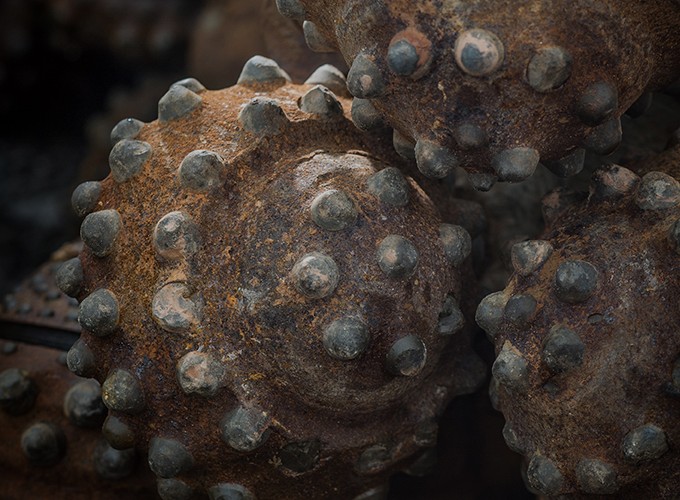Intro:
Tricone bits, also referred to as rotary bits and roller cone bits, are the workhorses of the drilling industry. Drillers use them in a wide variety of applications including mining, oil and gas exploration, water well and geothermal drilling, and construction applications. This post will describe the tricone drill bit, how the bits are graded, and what to do with tricones that have reached the end of their useful life.
History:
The Hughes Tool Company invented rotary these bits in 1909. Tricone rotary bits are recognizable for their three headed design and are manufactured in steel tooth and Tungsten Carbide Insert (TCI) varieties. These varieties describe different cutting structures of the teeth. The steel tooth variety is typically used for softer drilling conditions and the TCI is used for harder drilling conditions.
Drillers describe tricone bits by the diameter of the rotary cutting structure in either inches or millimeters. Drillers also describe bits by the cutting structure. TCI bits are often referred to as “button bits” and steel tooth bits will be referred to as “tooth bits.” For example, a 7 7/8″ diameter TCI bit will be referred to as a “7 7/8″ button bit” or a 12 1/4″ diameter steel tooth bit will be called a “12 1/4″ tooth bit.”
IADC Code:
The International Association of Drilling Contractors (IADC) describes the technical aspects of a drill bit in greater detail. The IADC code is a three digit numbering system that describes the series of the cutting structure, the type of cutting structure, and the bearing system and gauge surface.
The first number in the code is the “series” and it is numbered 1 – 8. Numbers 1-3 represent steel tooth bits and 4-8 describes TCI bits. The lower number in the series represents softer formations, so 1 would be softer than 3, and 4 would be softer than 8. The first series can generally be thought of as the height of the cutting structure with a lower number having a taller structure.
The second number in the code is the “type” and it is numbered 1-4. The type further defines the type of hardness of the formation, with 1 being softest and 4 being hardest. The type can be thought of as the “density” of cutting structure on the bit – the lower the number the lower density of cutting structures, whereas the higher the number the greater the density.
The third number in the code describes the bearings and the type of gauge protection. 1-5 identify roller bearings and 6-7 identify journal bearings. Gauge protection is the small carbide inserts that line the side of a bit to add wear protection to the bit body. The bearing type and gauge surface are:
- 1 – Standard Roller Bearing
- 2 – Roller Bearing, Air Cooled (common in mining)
- 3 – Roller Bearing, Air Cooled and Gauge Protected (common in mining)
- 4 – Sealed Roller Bearing
- 5 – Sealed Roller Bearing, Gauge Protected
- 6 – Sealed Friction Bearing (this bit uses journal bearings vs roller bearings)
- 7 – Sealed Friction Bearing, Gauge Protected
A mining bit might be ordered as a “15” IADC Code 5-3-3″. That bit would be a TCI bit used in a medium hard surface with air cooled roller bearings and gauge protection. A bit like that would be used in a medium hard surface with low compressive strength. An oil and gas bit might be ordered as a “7 7/8″ IADC Code 3-2-7.” That bit would be a steel tooth bit used in a hard semi-abrasive formation.
End of Usable Life and Recycling:
Tricone rotary bits are consumable products. Depending on application and geology, they will have a usable life that eventually runs out. Bits can fail for a number of reasons such as cone erosion, cone cracking, or coring. Once drill bits have used the end of their useful life they can be recycled. Kensal Carbide specializes in the recycling of tricone bits, particularly TCI bits. If you have any quantity of these bits, please contact us to learn more about our recycling process and pricing.

 Translate
Translate